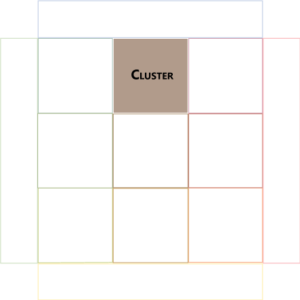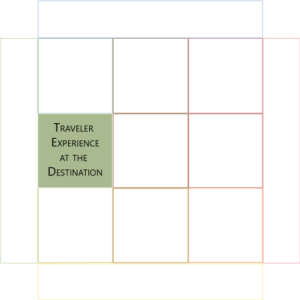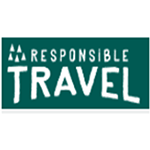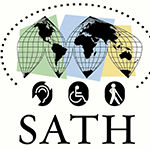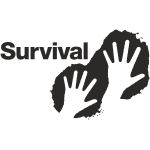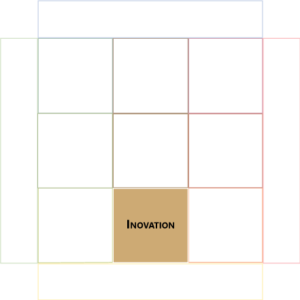
Innovation: Cracking points for exploration!

Innovation
18 powerful questions to embrace transformation, foster cooperation, and pave the way for sustainable travel
Key to Success
In this section, we would like to make sure that Small and Medium-sized Tourism Enterprises (SMTEs) should be aware of the following:
- The importance of innovation in creating advantages includes technology, products and services, and business models to differentiate themselves from competitors and create value.
- The importance of collaboration and partnerships in promoting innovation includes developing partnerships with technology providers, research institutions, and other tourism businesses to share knowledge, access resources, and foster innovation.
- How innovation can help promote sustainable practices, reduce tourism’s environmental footprint, and contribute to local economic and social well-being.
Accomplishments
In this step, we’ll:
- Identify where we are innovating.
- Highlight How our business is innovating.
- Find multiple opportunities where and how we can innovate.
Time-Saving Tools
We’ll complete all sections of this chapter more quickly if we have any of the following handy:
- The tourism destination market plan and strategic plan.
- Tourism road maps offered by the tourism destination
- Cluster’s marketing plan and strategic plan.
- Our business plan, our business objectives, and our strategic business plan.
- The trade travelers and other relevant stakeholders.
- Tourism road maps offered by the tourism destination
- The public policies that deal with the cluster.
- List of cluster members
- Cluster event calendar.
- Benchmarking innovation initiatives in the tourism destination.
- Risk analyses about innovation initiatives.
- Competitors analysis.
- Traveler feedback analysis.
- Value mapping analysis.
- All documents could be applied to find relevant information.
Presentation
Innovation involves creating new or improving existing products, services, or processes by introducing new methods, ideas, or technologies. Innovating can include making small incremental changes or radical shifts in how things are done. It is often driven by the desire to improve efficiency, effectiveness, or user experience and can lead to increased competitiveness, growth, and profitability for businesses. Therefore, innovation is crucial in driving economic growth and creating new opportunities in the tourism industry.
Small and Medium-sized Tourism Enterprises (SMTEs) can identify their innovations by following these effective methods or tools:
- Conducting Market Research: This involves gathering information about the market, competitors, and traveler needs. By conducting market research, Small and Medium-sized Tourism Enterprises (SMTEs) can identify gaps in the market, traveler pain points, and unmet needs that can be addressed through innovative solutions.
- Engaging with Travelers: Surveys, feedback forms, or online reviews can help Small and Medium-sized Tourism Enterprises (SMTEs) understand their needs and expectations. This can also provide insights into areas where innovation can be introduced to improve the traveler experience.
- Brainstorming Sessions: Sessions with employees, partners, or stakeholders can generate new ideas and innovative solutions. These sessions should encourage creativity, open-mindedness, and diversity of perspectives.
- Collaboration: Collaboration with other tourism enterprises, industry experts, or academia can provide access to new ideas, technologies, and knowledge that can be leveraged to develop innovative solutions.
- Experimentation: involves testing new ideas or solutions in a controlled environment. This can help Small and Medium-sized Tourism Enterprises (SMTEs) validate their innovations’ effectiveness and identify improvement areas.
- Technology Assessment: This involves identifying and evaluating new technologies that can be used to enhance the Traveler experience, improve operational efficiency, or reduce costs.
- Benchmarking: This involves comparing the performance of Small and Medium-sized Tourism Enterprises (SMTEs) against their competitors or industry best practices. This can help to identify areas where innovation can be introduced to improve performance.
In conclusion, by following these methods or tools, SMTEs can identify their innovations and develop effective solutions that can help them stay competitive in a rapidly changing market.
GUIDING QUESTIONS
How can we promote responsible and sustainable practices throughout our innovation initiatives? Implementing eco-friendly initiatives and supporting local communities will contribute to small tourism enterprises' long-term success and reputation through our innovations.
YScala
A suggestion of guiding questions that are not intended to exhaust the topic:
- What, where, or how are we innovating?
- How will the business adapt to the off-season? What can the business become in the off-season? Examples of the sky resorts that become mountain bike resorts during the summer.
- How can the business adapt to an exceptional high season? Does the operation have the elasticity to adapt to higher demand than anticipated?
- What are the latest innovations in tourism enterprises?
- How can enterprises use technology to improve their tourism offerings? How can enterprises leverage technology to create personalized experiences for travelers?
- What are the potential areas for innovation in our products, services, or operations? Assessing various business aspects will help identify improvement and innovation opportunities.
- How can businesses use AI and machine learning to enhance the traveler experience? What kind of data analytics can inform tourism enterprise decisions?
- How can enterprises use virtual reality and augmented reality to improve their Traveler experience? Exploring technology, such as virtual reality, artificial intelligence, or mobile applications, can lead to innovative solutions that differentiate the business from competitors.
- What are the emerging trends and technologies in the tourism industry should be aware of? Staying informed about industry developments will help small tourism enterprises to adapt and innovate in response to changes in the market.
- Are there any government initiatives that promote innovation in tourism enterprises?
- How can we foster a culture of innovation within our organization? Encouraging open communication, collaboration, and risk-taking will create an environment that supports developing and implementing new ideas.
- What innovative strategies can be used to increase our business?
- How can we test and validate new ideas before fully implementing them in our business? Conducting pilot projects or running small-scale experiments will help to assess the feasibility and potential impact of innovative solutions before committing significant resources.
- How can we allocate resources, including time and budget, to support innovation within our small tourism enterprise? Ensuring that adequate resources are dedicated to innovation efforts will increase the likelihood of their success.
- How can we effectively collaborate with external partners like other businesses, research institutions, or government agencies to drive innovation? Forming strategic partnerships can provide access to valuable resources, knowledge, and expertise to support innovation efforts.
- What alternatives to maintain profitability will the business use during the off-season?
- What are the advantages of innovative solutions to promote tourism enterprise?
- What role does social media play in tourism enterprise innovation?
Offering more information
Besides the 18 guiding questions we’ve provided to help us evaluate and improve of the innovation provided by us, we’ve compiled a list of valuable resources to further our knowledge and understanding of the innovation. Notably, these resources offer insights into best practices, sustainability, marketing, and more, catering to the needs of tourism professionals and stakeholders. Consequently, by exploring these links, you’ll be better equipped to make informed decisions and create a thriving, competitive, and sustainable destination for travelers from around the world.
- The Role of Innovation in the Tourism Industry – OECD Insights: This post from the OECD explores the role of innovation in the tourism industry, discussing the importance of adopting new technologies, business models, and marketing strategies to remain competitive. It highlights the potential for innovation to drive sustainable growth and development in the sector, offering insights for policymakers and industry stakeholders.
- Innovative Tourism Experiences – Destination BC – This post from Destination BC showcases innovative tourism experiences in British Columbia, providing examples of how businesses can leverage local culture, natural resources, and technology to create memorable experiences for visitors. It offers inspiration and insights for tourism operators looking to differentiate themselves in a competitive market.
- Digital Transformation in the Travel and Hospitality Industry – WNS: This article focuses on digital transformation in the travel and hospitality industry, highlighting the need for businesses to embrace new technologies and innovative practices to meet changing consumer demands. It covers the role of data analytics, artificial intelligence, and mobile technology in delivering personalized and seamless experiences for travelers.
- TripCreator: This blog post presents eight travel industry innovations that are changing the future of tourism, such as mobile technology, sustainable travel, personalized experiences, and the sharing economy. It explores how these trends are influencing traveler expectations and behaviors, challenging traditional business models and practices within the tourism sector.
- IBM Watson Blog: This blog post from IBM Watson discusses the role of artificial intelligence in the travel and hospitality industry, covering its applications in areas such as customer service, personalization, and revenue management. It highlights how AI-powered solutions can help businesses enhance the customer experience and optimize their operations.
Small and Medium-sized Tourism Enterprises (SMTEs) can build strong awareness about themselves by asking these questions and working through the answers to get advantages from innovation.
As you conclude reading this orientation post, we’d like to invite you to explore the other insightful articles in our Business Tailor 4 Sustainable Tourism Develop Management Tool (BT4-STDM) blog. We invite you to engage with our community, share your perspectives, and contribute to this meaningful conversation by commenting below. Your experiences and ideas can help others in their sustainable tourism development management journey.
Let your like and recommend this post to improve your audience!
Share this post with friends, colleagues, or anyone else who might be interested.
Comments:
We invite you to engage with our community, share your perspectives, and contribute to this meaningful conversation by commenting below. Your experiences and ideas can help others in their sustainable tourism development management journey.

